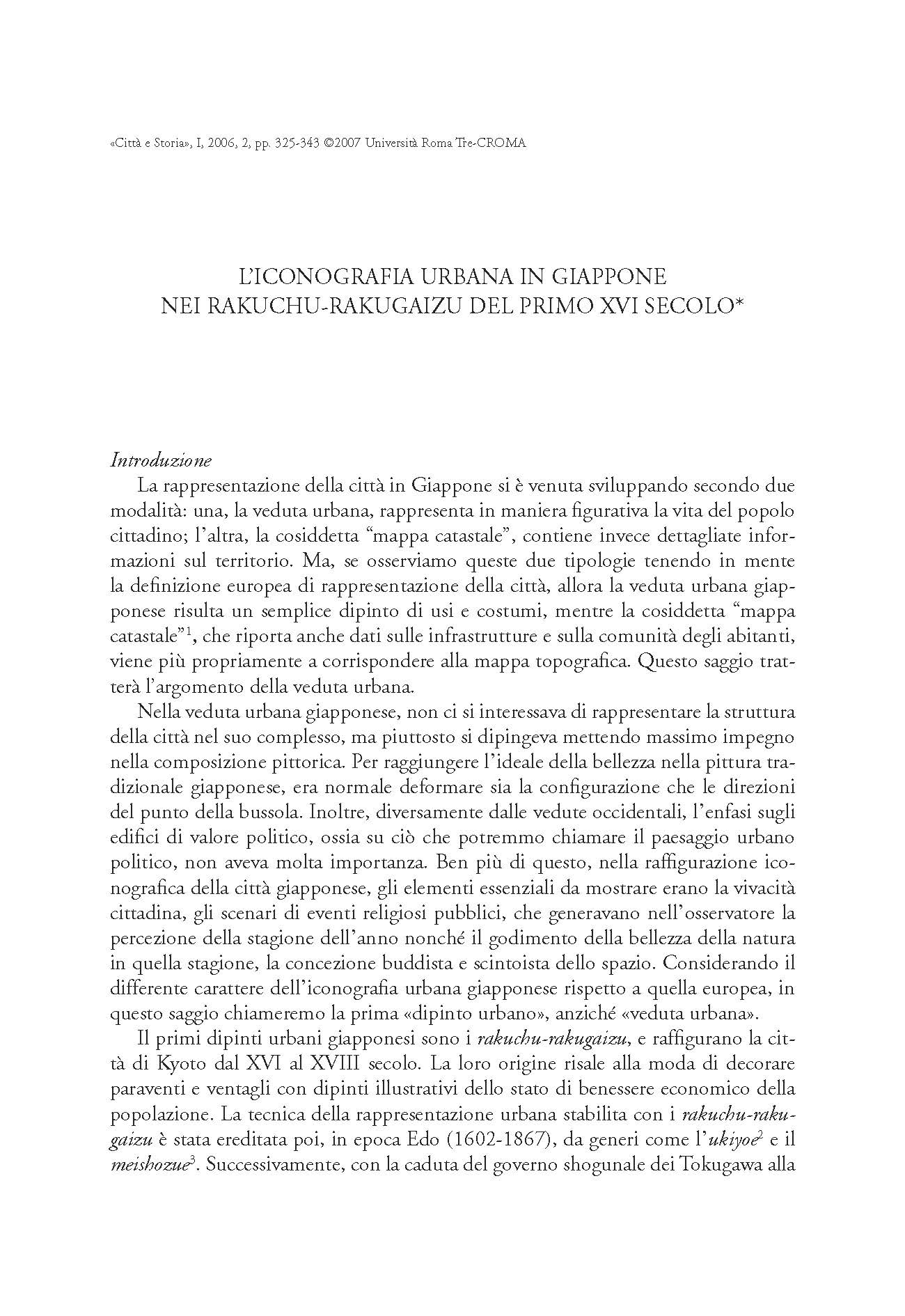L’iconografia urbana in Giappone nei Rakuchu-rakugaizu del primo XVI secolo
6,00 €
The first urban iconography in Japan is a series of paintings of Kyoto. They are, what we call, rakuchu raku-gaizu. Rakuchu rakugaizu were drawn from the middle of the sixteenth century until the beginning of the nineteenth century. The style of representation differs from those of the European urban iconographies from various points of view. The city is divided in two parts in order to represent it on two folding screens, and depicts the customs and culture of the time as well as the urban structure. The characteristic expression of rakuchu rakugaizu has its origin in medieval iconographies such yamato-e, mandara and emaki. The purpose of this paper is to examine how this new capital and its urban structure is represented in rakuchu rakugaizu, using technical and conceptional influences from former Japanese iconography.
The first urban iconography in Japan is a series of paintings of Kyoto. They are, what we call, rakuchu raku-gaizu. Rakuchu rakugaizu were drawn from the middle of the sixteenth century until the beginning of the nineteenth century. The style of representation differs from those of the European urban iconographies from various points of view. The city is divided in two parts in order to represent it on two folding screens, and depicts the customs and culture of the time as well as the urban structure. The characteristic expression of rakuchu rakugaizu has its origin in medieval iconographies such yamato-e, mandara and emaki. The purpose of this paper is to examine how this new capital and its urban structure is represented in rakuchu rakugaizu, using technical and conceptional influences from former Japanese iconography.

